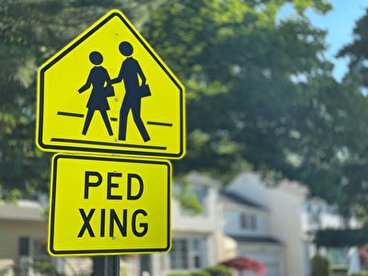
While everyone has different preferences when it comes to transportation, at one time or another everyone travels as a pedestrian. According to the National Highway Traffic Safety Administration, a pedestrian is killed nearly every 90 minutes in traffic crashes—but many of these deadly crashes are preventable. By applying the pedestrian safety countermeasures promoted as part of the Safe Transportation for Every Pedestrian (STEP) initiative, agencies can make significant reductions in crashes involving pedestrians.
In this course, you’ll learn how your agency can take the first step. The training offers a detailed overview of an FHWA-developed process that can help agencies select appropriate countermeasures to improve pedestrian safety.
The course is divided into 11 modules that can be taken individually, at your own pace:
- Goal—Increase Pedestrian Safety
- Revealing Pedestrian Safety Issues
- Saving Lives—Implementing Pedestrian Safety Countermeasures
- Crosswalk Visibility Enhancements
- Raised Crosswalks
- Pedestrian Refuge Islands
- Rectangular Rapid-Flashing Beacons
- Pedestrian Hybrid Beacons
- Road Diets
- Leading Pedestrian Intervals
- Evaluation and Implementation Strategies
Registration
- Register
- Cost: Free!
- Registration contact: mnltap@umn.edu
Topics Covered
- Benefits of STEP
- Selecting appropriate countermeasures
- Types of pedestrian safety countermeasures
- Implementing pedestrian safety
- Opportunities for funding
- Communicating with the public
- Monitoring results of implementation
Who Should Take This Course
This course is intended for local agency and tribal transportation safety specialists, planners, designers, engineers, supervisors, and project managers—particularly those that select and implement pedestrian crossing countermeasure installation.
Accessing the Course
This training is offered via the course management system Canvas. Upon completing your online registration, you will receive an email confirmation. To access the course, please visit Canvas and login with your University of Minnesota internet ID and password. Once you have been enrolled, your course will appear on your Canvas dashboard.
If for any reason you do not have access to the course after enrolling, please contact mnltap@umn.edu.
Technical Requirements
Canvas runs on Windows, Mac, Linux, iOS, Android, or any other device with a modern web browser. Chrome, Firefox, Safari, and Internet Explorer work best for this course.
If you’re new to Canvas, see tips and resources for using the platform.
Credit
To the best of our knowledge, this course meets the continuing education requirements for 6.0 PDHs as outlined in Minnesota Statute 326.107. More information concerning continuing education for professionals is available on the Minnesota Board of AELSLAGID website.
Sponsors
This course is offered by Minnesota LTAP at the University of Minnesota. Minnesota LTAP is sponsored by the Minnesota Local Road Research Board and the Federal Highway Administration.
Course curriculum was developed and compiled by the FHWA Center for Local Aid Support in conjunction with a technical advisory panel of experts including representatives of local agencies and state DOTs.